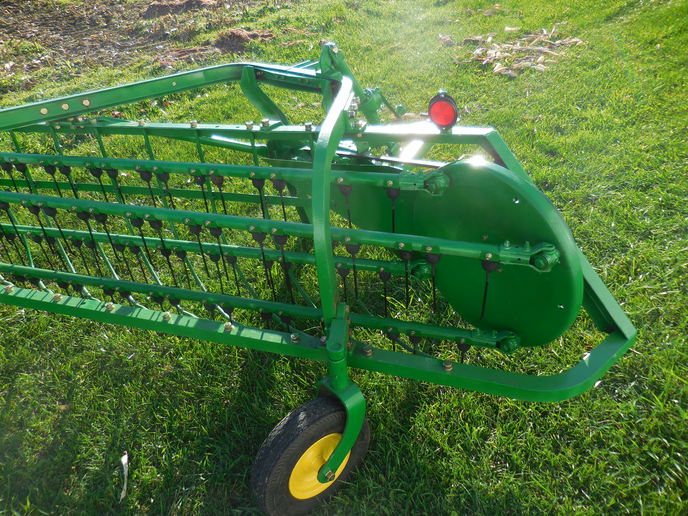You should upgrade or use an alternative browser.
- Thread starter rrlund
- Start date
Anonymous-0
Well-known Member
44Wheatland
Member
Uncle Barney was in the army at Fort Crook, later S.A.C. Headquarters, near Omaha. He was a General's driver, one hot summer day his car had three blow-outs. One of them was the spare in the trunk of the vehicle, this was likely a 42 Ford which had the same body style as the 46-48 Ford sedans.
Paul from MI
Well-known Member
John in Nebraska
Member
ShadetreeRet
Well-known Member
Car manufacturers started producing everything from small weapons to large artillary, bombs, jeeps, trucks, tanks, small aircraft up to bombers. Even a company like goodyear made aircraft.
Guns like the M1 carbine a M1911 produced by companies International Harvester, IBM, Smith Corona, Singer, National Postal Meter, GM guidelamp, Rock-ola Jukebox, and many more not named.
100 years ago next month was the start of World war 1. Sad that the world has disintergrated to the point it is at now.
Iraq in a mess, The Isrealis against Hamas, North Korea, the Russian situation with the Ukraine. It doesnt look good.
Untitled URL Link
Owen Aaland
Well-known Member

buickanddeere
Well-known Member
Human nature has not changed since the dawn of recorded time.
Mankind has perfected more efficient tools to kill each other .
There has always been wars and skirmishes . Floods, fire, famine and earthquakes . It just seems worse as we now have instant coverage from around the globe .
dr sportster
Well-known Member
The ability to win a large war is directly related to manufacturing capacity. Sadly, I think we all know where this is headed.
He complained that his enlistment in the Pacific was extended months longer after the war ended because they said he was needed to get ships ready for long term storage. "All ship hatches had to be tight and in top condition". Then they used those ships in atomic bomb tests and sank them.
I think the planning was completed and construction was well underway on Henry Ford's Willow Run B-24 bomber plant by the time of the Pearl Harbor attack.
Arnold Layne
Member
Billy Shafer
Well-known Member
Onan 12-13-41 Must have government permit. With a rating of A-1-G or better. In order to buy a generator.
Onan 12-20-41.Generators over a certain KW rating. To be determened at a later date. Will be restricted to military only.
UTICA DROP FORGE & TOOL October 4 1941
All distributors must fill out form(PD-25C) stating how much of your production. Is for defense purposes. In order for us to obtain raw materials.
Career[edit]
Knudsen was working for the John R. Keim Company of Buffalo, New York when the Ford Motor Company bought it in 1911 for its steel-stamping experience and tooling.[1] Knudsen worked for Ford from 1911[2] to 1921,[3] a decade that saw the formative development of the modern assembly line and true mass production.[4] Working first for the Ford Motor Company and later for General Motors, Knudsen became an expert on mass production and a skilled manager. Knudsen was president of the Chevrolet Division of General Motors from 1924[5] to 1937, and was president of General Motors from 1937[5] to 1940.
In 1940, President Roosevelt asked Knudsen to come to Washington to help with war production. Knudsen was appointed as Chairman of the Office of Production Management and member of the National Defense Advisory Commission.
In January 1942, Knudsen was commissioned a Lieutenant General in the U.S. Army, the only civilian ever to join the Army at such a high initial rank.[6] and appointed as Director of Production, Office of the Under Secretary of War. In this capacity, he worked as a consultant and a troubleshooter for the War Department.
In both of these positions, Knudsen used his extensive experience in manufacturing and industry respect to facilitate the largest production job in history. In response to the demand for war material, production of machine tools tripled. Total aircraft produced for the US military in 1939 was less than 3,000 planes. By the end of the war, America produced over 300,000 planes. Production of both cargo and Navy ships also increased astronomically. Knudsen's influence not only smoothed government procurement procedures, but also led companies that had never produced military hardware to enter the market. America outproduced its enemies. As Knudsen said, "We won because we smothered the enemy in an avalanche of production, the like of which he had never seen, nor dreamed possible.
Similar threads
- Replies
- 0
- Views
- 308
We sell tractor parts! We have the parts you need to repair your tractor - the right parts. Our low prices and years of research make us your best choice when you need parts. Shop Online Today.
Copyright © 1997-2024 Yesterday's Tractor Co.
All Rights Reserved. Reproduction of any part of this website, including design and content, without written permission is strictly prohibited. Trade Marks and Trade Names contained and used in this Website are those of others, and are used in this Website in a descriptive sense to refer to the products of others. Use of this Web site constitutes acceptance of our User Agreement and Privacy Policy TRADEMARK DISCLAIMER: Tradenames and Trademarks referred to within Yesterday's Tractor Co. products and within the Yesterday's Tractor Co. websites are the property of their respective trademark holders. None of these trademark holders are affiliated with Yesterday's Tractor Co., our products, or our website nor are we sponsored by them. John Deere and its logos are the registered trademarks of the John Deere Corporation. Agco, Agco Allis, White, Massey Ferguson and their logos are the registered trademarks of AGCO Corporation. Case, Case-IH, Farmall, International Harvester, New Holland and their logos are registered trademarks of CNH Global N.V.
Yesterday's Tractors - Antique Tractor Headquarters
Website Accessibility Policy

